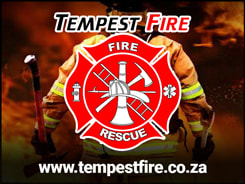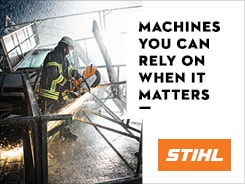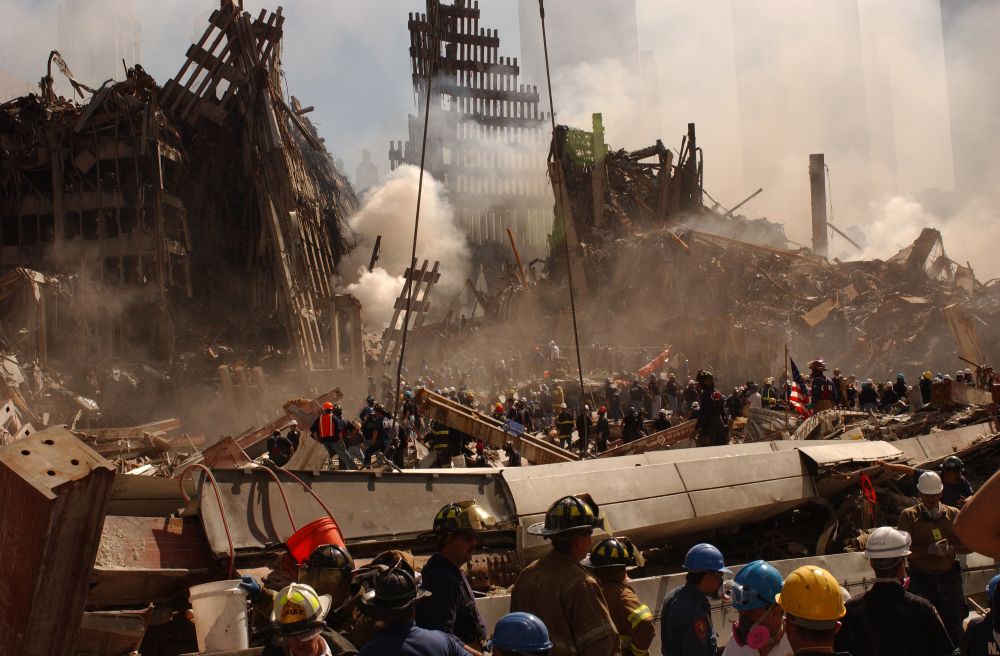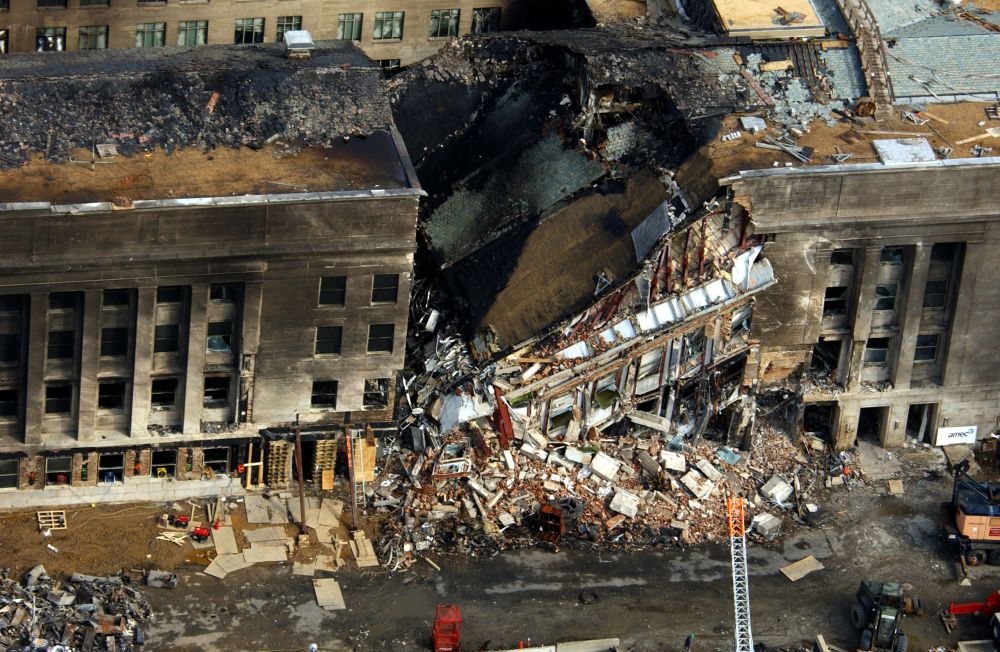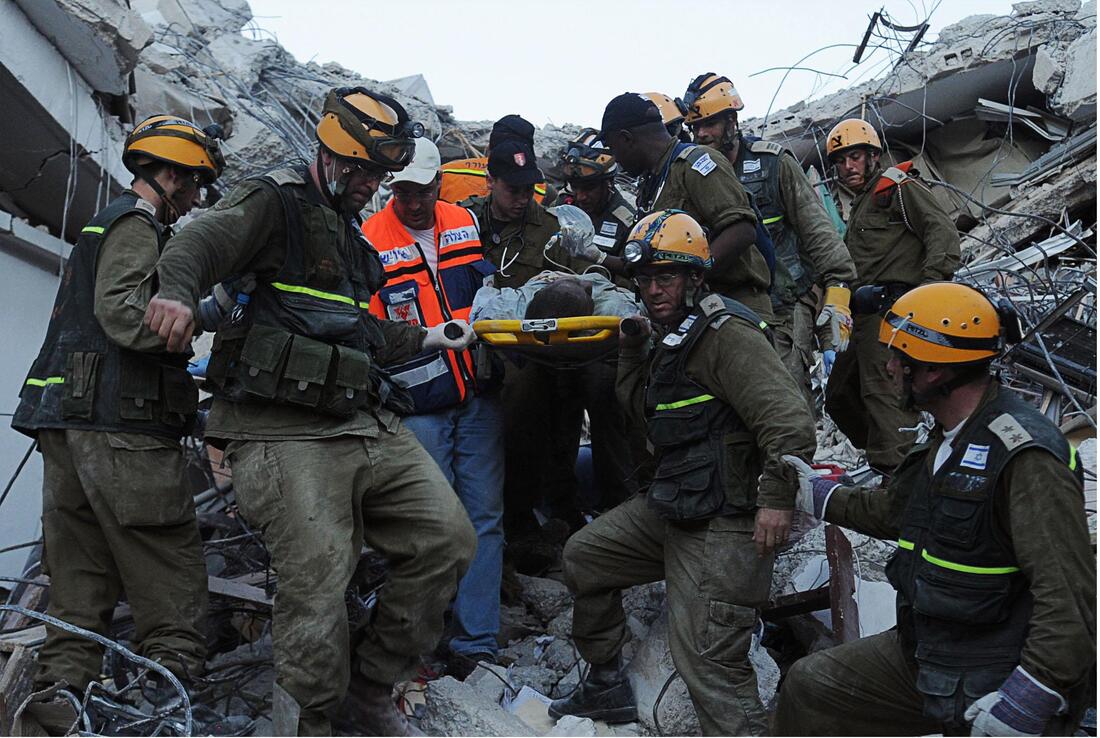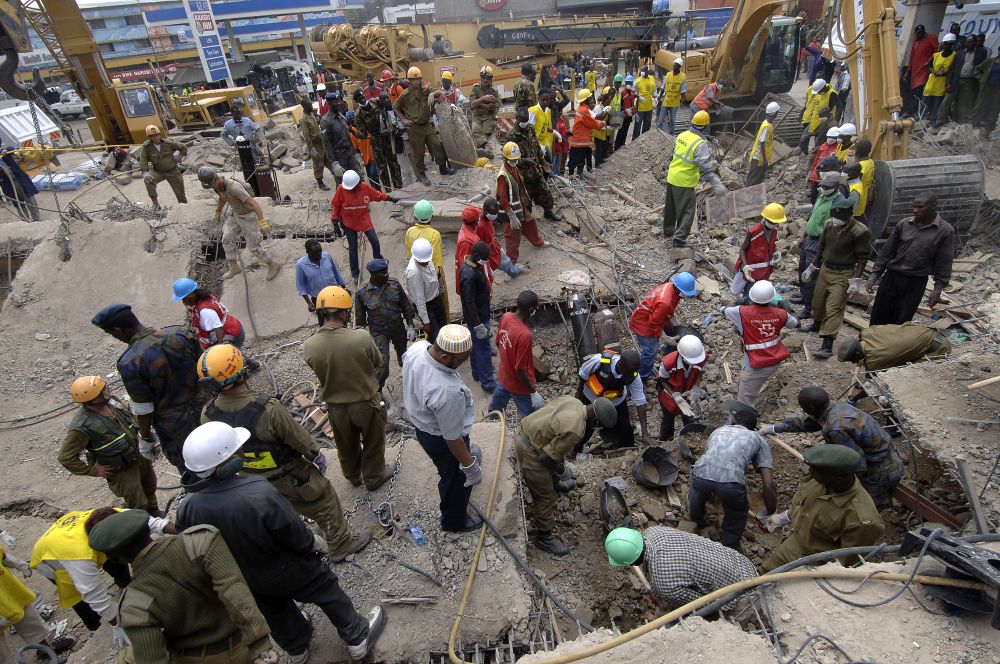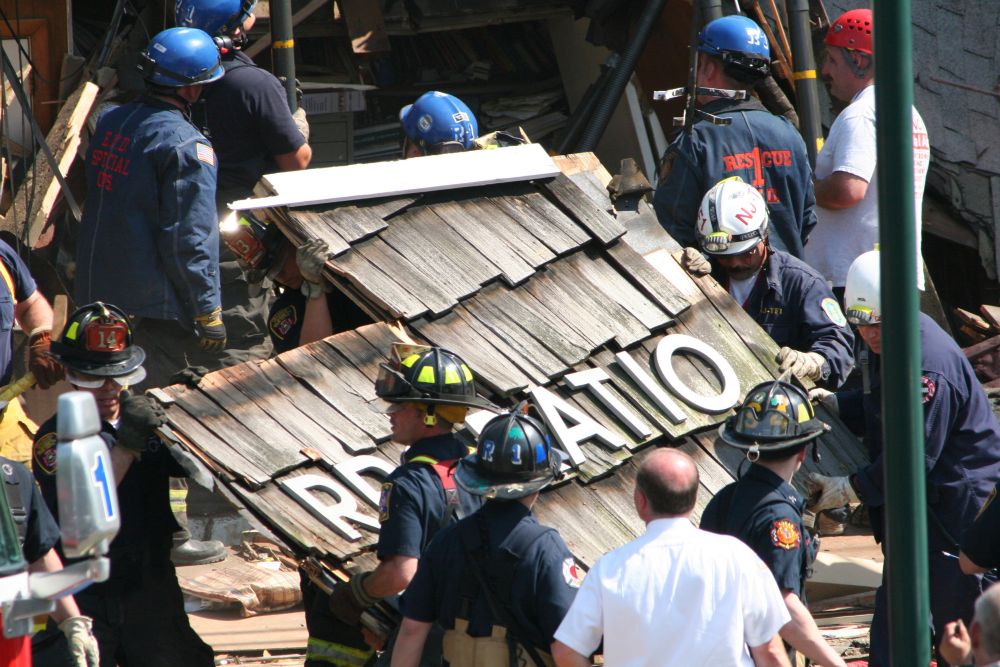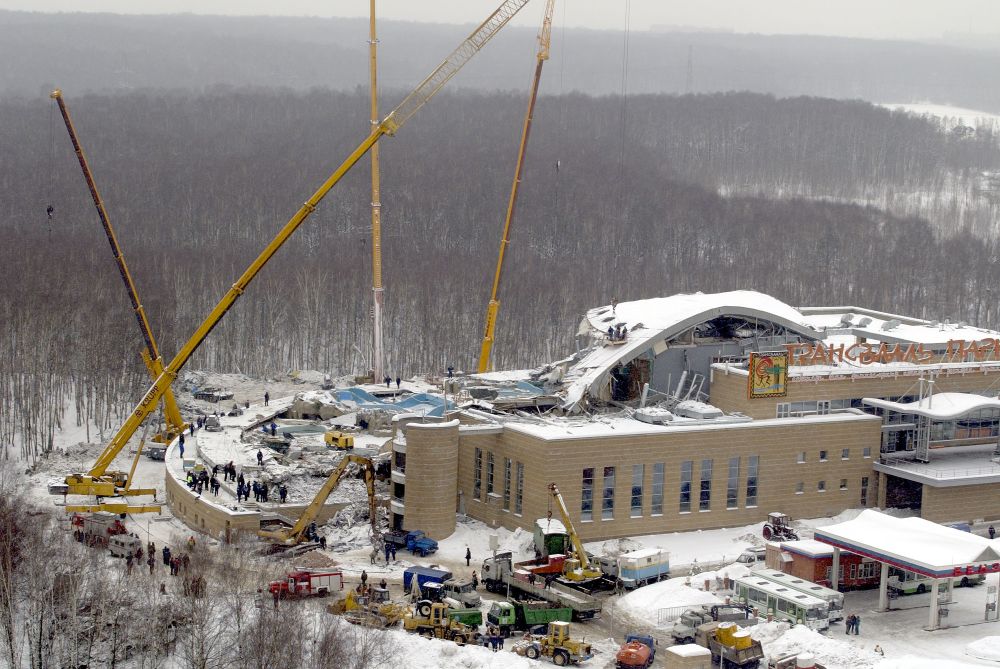- Home
- Magazines
-
Newsletters
- 19 July 2024
- 12 July 2024
- 5 July 2024
- 28 June 2024
- 14 June 2024
- 7 June 2024
- 31 May 2024
- 24 May 2024
- 17 May 2024
- 10 May 2024
- 3 May 2024
- 26 April 2024
- 19 April 2024
- 12 April 2024
- 22 March 2024
- 15 March 2024
- 8 March 2024
- 1 March 2024
- 23 February 2024
- 16 February 2024
- 9 February 2024
- 26 January 2024
- 19 January 2024
- 12 January 2024
- 22 December 2023
- 1 December 2023
- 24 November 2023
- 10 November 2023
- 3 November 2023
- 27 October 2023
- 20 October 2023
- 13 October 2023
- 6 October 2023
- 29 September 2023
- 22 September 2023
- 15 September 2023
- 8 September 2023
- 25 August 2023
- 18 August 2023
- 11 August 2023
- 4 August 2023
- 28 July 2023
- 21 July 2023
- 14 July 2023
- 7 July 2023
- 30 June 2023
- 23 June 2023
- 15 June 2023
- 2 June 2023
- 26 May 2023
- 19 May 2023
- 12 May 2023
- 5 May 2023
- 28 April 2023
- 21 April 2023
- 14 April 2023
- 6 April 2023
- 31 March 2023
- 24 March 2023
- 17 March 2023
- 10 March 2023
- 3 March 2023
- 24 February 2023
- 17 February 2023
- 10 February 2023
- 3 February 2023
- 27 January 2023
- 13 January 2023
- 22 December 2022
- 15 December 2022
- 9 December 2022
- 2 December 2022
- 25 November 2022
- 18 November 2022
- 11 November 2022
- 4 November 2022
- Advertising
- Subscribe
- Articles
-
Galleries
- AOSH Firexpo 2024
- Midvaal Fit to Fight Fire 2024
- WoF KNP 2023 Gallery
- TFA 2023 Gallery
- DMISA Conference 2023
- ETS 2023 Gallery
- Drager Fire Combat and Rescue Challenge 2023
- AOSH Firexpo 2023
- Midvaal Fit to Fight Fire
- WC IFFD 2023
- NMU 13th Fire Management Symposium 2022
- JOIFF Africa Conference 2022
- ETS 2022 Gallery
- TFA 2022 Gallery
- IFFD 2018
- SAESI
- TFA
- WRC 2018
- WRC 2019
- A-OSH/Securex
- IFE AGM 2019
- ETS Ind Fire Comp Nov 2019
- ETS Challenge 2021
- Drager launch
- Drager Fire Combat and Rescue Challenge 2022
- TFA
- Contact
- Home
- Magazines
-
Newsletters
- 19 July 2024
- 12 July 2024
- 5 July 2024
- 28 June 2024
- 14 June 2024
- 7 June 2024
- 31 May 2024
- 24 May 2024
- 17 May 2024
- 10 May 2024
- 3 May 2024
- 26 April 2024
- 19 April 2024
- 12 April 2024
- 22 March 2024
- 15 March 2024
- 8 March 2024
- 1 March 2024
- 23 February 2024
- 16 February 2024
- 9 February 2024
- 26 January 2024
- 19 January 2024
- 12 January 2024
- 22 December 2023
- 1 December 2023
- 24 November 2023
- 10 November 2023
- 3 November 2023
- 27 October 2023
- 20 October 2023
- 13 October 2023
- 6 October 2023
- 29 September 2023
- 22 September 2023
- 15 September 2023
- 8 September 2023
- 25 August 2023
- 18 August 2023
- 11 August 2023
- 4 August 2023
- 28 July 2023
- 21 July 2023
- 14 July 2023
- 7 July 2023
- 30 June 2023
- 23 June 2023
- 15 June 2023
- 2 June 2023
- 26 May 2023
- 19 May 2023
- 12 May 2023
- 5 May 2023
- 28 April 2023
- 21 April 2023
- 14 April 2023
- 6 April 2023
- 31 March 2023
- 24 March 2023
- 17 March 2023
- 10 March 2023
- 3 March 2023
- 24 February 2023
- 17 February 2023
- 10 February 2023
- 3 February 2023
- 27 January 2023
- 13 January 2023
- 22 December 2022
- 15 December 2022
- 9 December 2022
- 2 December 2022
- 25 November 2022
- 18 November 2022
- 11 November 2022
- 4 November 2022
- Advertising
- Subscribe
- Articles
-
Galleries
- AOSH Firexpo 2024
- Midvaal Fit to Fight Fire 2024
- WoF KNP 2023 Gallery
- TFA 2023 Gallery
- DMISA Conference 2023
- ETS 2023 Gallery
- Drager Fire Combat and Rescue Challenge 2023
- AOSH Firexpo 2023
- Midvaal Fit to Fight Fire
- WC IFFD 2023
- NMU 13th Fire Management Symposium 2022
- JOIFF Africa Conference 2022
- ETS 2022 Gallery
- TFA 2022 Gallery
- IFFD 2018
- SAESI
- TFA
- WRC 2018
- WRC 2019
- A-OSH/Securex
- IFE AGM 2019
- ETS Ind Fire Comp Nov 2019
- ETS Challenge 2021
- Drager launch
- Drager Fire Combat and Rescue Challenge 2022
- TFA
- Contact
|
24 November 2023
|
Featured FRI Magazine article: Urban search and rescue response: what to do when disaster strikes by Colin Deiner (FRI Vol 1 no 9)
https://www.frimedia.org/uploads/1/2/2/7/122743954/fri_vol1_no9_lr.pdf
This week’s featured Fire and Rescue International magazine article is: Urban search and rescue response: what to do when disaster strikes written by Colin Deiner, chief director, Disaster management and Fire Brigade Services, Western Cape Government (FRI Vol 1 no 9). We will be sharing more technical/research/tactical articles from Fire and Rescue International magazine on a weekly basis with our readers to assist in technology transfer. This will hopefully create an increased awareness, providing you with hands-on advice and guidance. All our magazines are available free of charge in PDF format on our website and online at ISSUU. We also provide all technical articles as a free download in our article archive on our website.
Urban search and rescue response: what to do when disaster strikes
By Colin Deiner, chief director, Disaster management and Fire Brigade Services, Western Cape Provincial Government
No rescue discipline has enjoyed as much attention or had as much time dedicated to it than urban search and rescue (USAR).
Since the 9/11 bombings of 2001 billions of dollars have been invested in training, equipment and response systems for urban search and rescue. Countries have established USAR response teams consisting of up to 200 members, able to respond to any corner of the world within 24 hours.
The 2010 earthquake disaster in Haiti was responded to by more than 30 formal and informal rescue teams, comprising more than 700 rescuers. Searching for victims trapped beneath the rubble of a collapsed structure has evolved into a science with resources ranging from rescue dogs, capable of discriminating between the scent of live and dead victims, to remote controlled robots able to operate in oxygen deficient and toxic environments.
In South Africa two USAR units were deployed as part of the 2010 FIFA World Cup legacy projects. NGOs have also procured state-of-the-art equipment caches and deployed them to rescue operations in earthquake ravaged parts of the world with great success.
The rise of urban search and rescue has been phenomenal, and that is great. The main question is: how prepared are we as fire departments to respond to a major structural collapse incident in our own cities? What if the collapse does not necessarily warrant the need for a USAR task force? In this article I will try to provide some insights into how we should plan for this.
Some history
Urban search-and-rescue is an activity which involves the location, rescue (extrication), and initial medical stabilisation of victims trapped in collapsed structures and its origins can be traced back to the London Fire Brigade during the dark days of the Blitz during World War II. Firemen were engaged daily in the location and extrication of victims of the frequent Luftwaffe bombing raids and it was here, where many of the strategies and tactics still used today, were first developed and tested.
The concept of deploying a team of specialists from various interrelated disciplines to respond to a major structural collapse started developing in the seventies and eighties when rescuers from Metro-Dade County Fire Department in Maimi, Florida and Montgomery County, Maryland, responded to the earthquake disasters in Mexico and Soviet Armenia.
Specialist USAR response hit the front pages in a big way in 1994 following the bombing of the Murrah Building in Oklahoma City. Eleven teams, consisting of 665 rescue workers, responded from all over the USA and their heroic search and rescue efforts inside the badly fractured building were featured daily on television news bulletins.
The 9/11 bombings of the World Trade Centre in New York City and the Pentagon not only refocused the world’s attention on structural collapse rescue but also created awareness in many countries of the capabilities and benefits of establishing USAR task forces.
Soon hereafter many nations started training and equipping USAR teams and those nations who already had teams relooked their strategies and deployment capacity and set about reorganising areas that needed to be improved.
This world-wide awareness has had massive benefits for disaster prone countries and has led to huge response efforts to earthquake affected regions such as Haiti (2010) and Japan (2011). The United Nations, recognising the value of having access to international USAR response systems, established its “International Search and Rescue Advisory Group” (INSARAG) in the early nineties. INSARAG, which is under the control of the UN office for the Coordination of Humanitarian Affairs (OCHA), has established clear guidelines and standards for USAR activities and plays an important role in ensuring effective deployment of teams during major disaster rescue operations.
All these strides do not however take away the responsibility of the emergency services to respond effectively and safely to structural collapse incidents in their own towns and cities. How do we do that?
First response
The massive capacities offered by a USAR task force is not necessarily available to all fire and rescue services when they experience a structural collapse incident in their cities and in the majority of occasions the first arriving units will set the course for the escalation of events. First arriving units generally consist of the first response fire truck for the area, a fire/rescue unit of some description and the relevant emergency medical response. Although the scene which they will be confronted with could be overwhelming, it will be their initial actions that will determine the course of events over the next few hours or even days. The initial challenges that they will be faced with will include mass devastation (depending on the kind of collapse) over a large area, secondary fires still burning in sometimes inaccessible areas, many casualties (many still trapped and requiring prolonged extrication), debris strewn over a large area, exposed hazardous materials, damaged water mains and overwhelming requests for help from spontaneous community responders to injured victims.
In this situation which can easily overwhelm any incident commander it is important to put the crucial building blocks in place to ensure sufficient back-up response and to ensure that all incoming units are properly accommodated and deployed to the right areas.
The incident commander (who at this point will be the first arriving officer) must quickly form a picture in his/her mind of the total impact of the incident. This will often be difficult and not very accurate but will at least give direction to his/her initial activities. It is important to mentally triage people seeking assistance. People rushing to the responders might in all probability not be the most seriously injured. Do not tie your medical crews up dealing with these victims unless you have had a good look at the collapsed structure and identified areas where the most trapped and injured victims could be. In any structural collapse incident you will be facing more than one hazard. Not only do you have to look at the stability of the remaining structure but also take note of any utilities, hazardous materials and other risks that could prevail. In the event of act of terror you need to be wary of the possibility of a secondary explosion and it is important here to work very closely with the police explosives units on the scene.
Very little of the actions of the first arriving units will involve rescue operations or advanced patient care. Your activities will largely be to prepare the scene for the arrival of the next level of response and will include the establishment of a reliable water source (from hydrants outside the affected zone), establishing paths into the incident and keeping them clear, establishing a triage system and the implementation of a primary communications network. It would be advisable at this point to designate a team of communications runners to relay messages to other units. This will become important as the chances of your radio traffic becoming too overwhelming and jamming in these early stages are very possible. A number of minor tasks must be carried out at this stage. Pay attention to them. They will be critical to the success of the incident later on.
Incident command
Command of a large structural collapse incident will change significantly from the arrival of the first-due unit to the eventual, overall command system being implemented. At all these points it is vital that the incident commander evaluates the on-going events and adapts the action plan and allocation of resources accordingly. A measured approach is called for, only deploy the resources that you can safely use in a specific area and try to keep the well intending at a safe distance where they won’t be a danger to the rescuers or themselves. Ensure a clearly marked and well managed secondary staging area for all incoming units and mutual assistance services, this will allow better site control and ensure that you can identify the available resources more readily, and deploy them to the areas where they will be of most value.
The bleeding, screaming victim is always going to be a distraction to your crews at this time and this problem must be firmly managed as EMS crews tend to get tied down to such victims at the expense of the mission objectives (more seriously bleeding and screaming victims). It is specifically the medical commanders who should refrain from getting involved in the medical management of the victims. Remember, if you are treating a patient you are not commanding the incident.
When commanding an incident of this nature you are going to be in command of a large number of responders from different services with different backgrounds and mostly having different tactical objectives. The art here is to have them all dovetailed to achieve the main objective (your objective!).
Throwing all available resources at the incident is a recipe for disaster and will severely limit your access to resources later on. Escalate slowly, ensuring that everyone working on the incident is aware of the direction of tactical objectives. Understand that an incident of this nature will probably require several days to complete and you will have rotate crews at different times while at the same time ensuring their safety and welfare. Make sure you plan for this early on. When the first size-up is done, consider the possible extent of the operation and the time it might take to complete it. Then start ordering the necessary lighting equipment, shelter, food and rehabilitation facilities for the rescuers. Establish a rotation system and ensure that it is strictly adhered to. It happens too often that rescuers are in the process of extricating a victim when their shift comes to an end. They continue their work thinking “we almost have him free”, but underestimate the level of entrapment and end up working for a further two to three hours to release the victim. Tired rescuers make mistakes!
Remember that a structural collapse scene is dynamic and will change a number of times during a prolonged operation. When a large enough structural element is removed from the collapsed structure it could change the entire safety profile of the incident. You should therefore never stop information gathering and any new risks should be clearly marked and brought to the attention of all.
Periodic operational briefings are of huge importance and the following two types of briefings must be held:
The need for specialised rescue teams is vital during structural collapse operations and fortunately we have seen a fair number of these “rescue technicians” trained over the last few years. The incident commander must realise that these teams are trained to work as a team and that by separating them from each other you will scatter their skills which will be to no advantage.
Special operations teams are usually extremely well trained and as part of their training are expected to complete a strenuous 72 hour exercise which is aimed at preparing them to work in the most extreme conditions. When you are deploying them on the “real thing” you must take the added stress into account and attempt to rotate them after a maximum of twelve hours.
Rescue command
Rescue command is established in addition to the overall incident command and is responsible for achieving the objectives related to the following:
Rescue command will be responsible for the largest number of staff and equipment and will also need access to heavy plant and machinery. They will work very close to the logistical support team who will spend approximately 70% of their time looking after rescue command. Incident commanders must take care not to be overwhelmed by the myriad of tasks and create too many levels (and too many responsibilities) within this structure. The incident command team must be a unified team with a fluid structure able to seamlessly adapt to the changing conditions.
It is a primary responsibility of rescue command to maintain and update the site operational plan and to keep everyone updated. The heavy rescue work performed by rescuers carries a constant risk of destabilising the structures and caution must be exercised to prevent secondary collapse from happening. Rescue command must work closely with equipment operators and must always take their experience into account. Also accept that although the crane operator may have many years of experience and can probably operate the crane with his eyes closed, he has never had to lift a concrete slab off a group of badly disfigured bodies. He might also not be used having to operate the crane load only centimetres away from a rescuer and a badly injured victim.
Safety will always be the prime consideration and must be built into the chain of command from the outset. Safety officers should be appointed at each level that should identify critical safety and health issues within their specific areas. Although all efforts should be made to prevent the possibility of a secondary collapse, it must always be a consideration and for this reason the number of workers deployed within the collapse zone should be limited.
Task force deployment
I have discussed the deployment of a USAR task force earlier and the chances are that should you be dealing with a big enough incident that you will at some stage receive the assistance of a self-contained USAR task force. The task force will not be part of the first response and might arrive several hours into the incident. Depending on the scale of the collapse (such as an earthquake where several buildings have collapsed) you may be offered the assistance of foreign search and rescue teams who will arrive within 24 hours of the incident taking place. The USAR team will work within the command system and can be utilised to perform the following tasks:
The direction of emergency medical operations must be determined by the incident commander at an early stage and must be enforceable on all EMS responders. A major incident is likely to attract all sorts of responders from government and private services, some of whom will tend to work separately from the main command structure, thereby causing a danger to themselves as well as other responders. The person who assumes the position of EMS commander must establish a perimeter control early on and ensure that all EMS personnel within the operations zone follow the established incident command system.
As is the case with the rescue personnel, you don’t want to flood the incident with responders so it would be advisable to hold personnel in the staging area and only use when necessary. The EMS commander must make an early call on the size of the incident and call for the necessary medical supplies in anticipation of a protracted incident.
As medical responders generally do not have the same level of protection as rescuers they should be clearly briefed on the prevailing hazards and not be deployed into hazardous areas for which they are not properly attired. There will be a real possibility of bio-hazards present in a collapsed building due to destroyed sewer lines, compromised containers etc. This must be monitored on an on-going basis.
Emergency medical services operations will generally start with a huge number of victims seeking treatment and ambulance transportation. This will initially require the deployment of any number of paramedics and EMTs into triage areas. As the incident progresses, the need for EMS support will diminish and their activities will be limited to managing trapped victims and countering the effects of crush syndrome as well as providing medical support to the rescue teams. The initial patient treatment should be simple and medics should take care not to immerse themselves in the treatment of seriously injured patients when the numbers of victims also needing attention are piling up. As the victims become less, the need for more intense treatment will escalate. Due to the protracted duration of the incident it will also become necessary to rotate crews regularly. Allowance must however be made for the overlapping of shifts to ensure a thorough and detailed handover.
Any use of air transportation must be used with utmost care and any helicopter landing strips should be well away from any unstable structures.
Equipment use
The number and type of equipment will be great and varied during a major structural collapse operation. Without going into too much detail on all the equipment required, here are just a few tips on some kit that will end up being vital to the success of the effort.
Lighting: enough lighting must be provided to illuminate the entire site. Do this early! Also ensure that there is enough “hands-free” lighting to provide to rescuers and paramedics.
Hydraulic shears, cutters and spreaders: this equipment will be useful in the early stages of the incident for cutting rebar and lifting small concrete slabs.
Whizzer saws (K12): the small K12 whizzer saw is a small and compact tool which can be inserted into confined spaces with one hand and used to cut away at steel bars and sheets obstructing the entry of a rescuer or trapping the arm or leg of a victim.
Fire extinguishers: depending on the type of collapse you might be confronted with a number of small fires still burning in the structure. Certain exothermic cutting work might also start a fire in an area that you will not be able to reach with a fire truck. An adequate supply of fire extinguishers must be provided for this purpose.
Buckets and small shovels: will be invaluable for moving debris in confined spaces.
Utility ropes: a good supply of ropes of all lengths.
Stabilisation
Stabilisation of a collapsed structure will normally take three forms:
Short term stabilisation: this allows rescue and specifically recon teams to enter a building and affect certain emergency rescues or reconnoitre the structure. High pressure air bags and box cribs are generally used to provide a measure of stabilisation in these cases.
Long term stabilisation: this is needed when protracted operations are expected in a specific part of a collapsed structure. This will consist of creating safe areas within the structure by constructing a series of vertical (dead) shores and countering the possibility of walls collapsing laterally by means of raker shores. In all cases you will need the advice of a structural engineer who is well versed in the stabilisation methods required. Only experienced USAR technicians must be used to do this task and no smaller than 150mm by 150mm (“8x8”) timber must be used.
Sustained access: certain doors and windows will provide sustained access for rescuers to enter and exit the building over a prolonged period. These openings must be reinforced with timber lining the borders thereof.
More advanced stabilisation methods will be required for the stabilisation of hanging slabs where winches or come-along tools could be used or reinforced nets could be used to create a “diaper” around the slab.
Conclusion
In this article I have merely scratched the surface of the enormous task that confronts any incident commander at the scene of a major structural collapse incident. In future articles I hope to unpack certain of these concepts and provide a clearer picture of the technicalities of such an operation. It is however up to you, the responder, to train, plan and prepare for next time you have to do battle with a building.
Captions
Photo1
The 9/11 bombings of the World Trade Centre in New York City and the Pentagon not only refocused the world’s attention on structural collapse rescue but also created awareness in many countries of the capabilities and benefits of establishing USAR task forces
Photo 2
This aerial photograph shows some of the destruction caused when the high-jacked American Airlines flight slammed into the Pentagon on 11 September 2001. Department of Defence photograph by Tech Sgt Cedric H Rudisill - released
Photo 3
The IDF medical and rescue team in Port-au-Prince, Haiti rescued a Haitian government worker who was trapped in the ruined customs office for 90 hours, before being evacuated in a moderate manner to the IDF field hospital
Photo 4
Volunteer workers dig for survivors in January 2006, after a building collapsed on Nairobi's Ronald Ngala Street in Kenya. US Air Force photo by Staff Sgt Ricky A Bloom
Photo 5
A building collapse in downtown Fanwood, New Jersey, USA
Photo 6
A general view of the Transvaal water park ruins, Moscow, in 2004. Twenty five people were confirmed dead in the disaster
This week’s featured Fire and Rescue International magazine article is: Urban search and rescue response: what to do when disaster strikes written by Colin Deiner, chief director, Disaster management and Fire Brigade Services, Western Cape Government (FRI Vol 1 no 9). We will be sharing more technical/research/tactical articles from Fire and Rescue International magazine on a weekly basis with our readers to assist in technology transfer. This will hopefully create an increased awareness, providing you with hands-on advice and guidance. All our magazines are available free of charge in PDF format on our website and online at ISSUU. We also provide all technical articles as a free download in our article archive on our website.
Urban search and rescue response: what to do when disaster strikes
By Colin Deiner, chief director, Disaster management and Fire Brigade Services, Western Cape Provincial Government
No rescue discipline has enjoyed as much attention or had as much time dedicated to it than urban search and rescue (USAR).
Since the 9/11 bombings of 2001 billions of dollars have been invested in training, equipment and response systems for urban search and rescue. Countries have established USAR response teams consisting of up to 200 members, able to respond to any corner of the world within 24 hours.
The 2010 earthquake disaster in Haiti was responded to by more than 30 formal and informal rescue teams, comprising more than 700 rescuers. Searching for victims trapped beneath the rubble of a collapsed structure has evolved into a science with resources ranging from rescue dogs, capable of discriminating between the scent of live and dead victims, to remote controlled robots able to operate in oxygen deficient and toxic environments.
In South Africa two USAR units were deployed as part of the 2010 FIFA World Cup legacy projects. NGOs have also procured state-of-the-art equipment caches and deployed them to rescue operations in earthquake ravaged parts of the world with great success.
The rise of urban search and rescue has been phenomenal, and that is great. The main question is: how prepared are we as fire departments to respond to a major structural collapse incident in our own cities? What if the collapse does not necessarily warrant the need for a USAR task force? In this article I will try to provide some insights into how we should plan for this.
Some history
Urban search-and-rescue is an activity which involves the location, rescue (extrication), and initial medical stabilisation of victims trapped in collapsed structures and its origins can be traced back to the London Fire Brigade during the dark days of the Blitz during World War II. Firemen were engaged daily in the location and extrication of victims of the frequent Luftwaffe bombing raids and it was here, where many of the strategies and tactics still used today, were first developed and tested.
The concept of deploying a team of specialists from various interrelated disciplines to respond to a major structural collapse started developing in the seventies and eighties when rescuers from Metro-Dade County Fire Department in Maimi, Florida and Montgomery County, Maryland, responded to the earthquake disasters in Mexico and Soviet Armenia.
Specialist USAR response hit the front pages in a big way in 1994 following the bombing of the Murrah Building in Oklahoma City. Eleven teams, consisting of 665 rescue workers, responded from all over the USA and their heroic search and rescue efforts inside the badly fractured building were featured daily on television news bulletins.
The 9/11 bombings of the World Trade Centre in New York City and the Pentagon not only refocused the world’s attention on structural collapse rescue but also created awareness in many countries of the capabilities and benefits of establishing USAR task forces.
Soon hereafter many nations started training and equipping USAR teams and those nations who already had teams relooked their strategies and deployment capacity and set about reorganising areas that needed to be improved.
This world-wide awareness has had massive benefits for disaster prone countries and has led to huge response efforts to earthquake affected regions such as Haiti (2010) and Japan (2011). The United Nations, recognising the value of having access to international USAR response systems, established its “International Search and Rescue Advisory Group” (INSARAG) in the early nineties. INSARAG, which is under the control of the UN office for the Coordination of Humanitarian Affairs (OCHA), has established clear guidelines and standards for USAR activities and plays an important role in ensuring effective deployment of teams during major disaster rescue operations.
All these strides do not however take away the responsibility of the emergency services to respond effectively and safely to structural collapse incidents in their own towns and cities. How do we do that?
First response
The massive capacities offered by a USAR task force is not necessarily available to all fire and rescue services when they experience a structural collapse incident in their cities and in the majority of occasions the first arriving units will set the course for the escalation of events. First arriving units generally consist of the first response fire truck for the area, a fire/rescue unit of some description and the relevant emergency medical response. Although the scene which they will be confronted with could be overwhelming, it will be their initial actions that will determine the course of events over the next few hours or even days. The initial challenges that they will be faced with will include mass devastation (depending on the kind of collapse) over a large area, secondary fires still burning in sometimes inaccessible areas, many casualties (many still trapped and requiring prolonged extrication), debris strewn over a large area, exposed hazardous materials, damaged water mains and overwhelming requests for help from spontaneous community responders to injured victims.
In this situation which can easily overwhelm any incident commander it is important to put the crucial building blocks in place to ensure sufficient back-up response and to ensure that all incoming units are properly accommodated and deployed to the right areas.
The incident commander (who at this point will be the first arriving officer) must quickly form a picture in his/her mind of the total impact of the incident. This will often be difficult and not very accurate but will at least give direction to his/her initial activities. It is important to mentally triage people seeking assistance. People rushing to the responders might in all probability not be the most seriously injured. Do not tie your medical crews up dealing with these victims unless you have had a good look at the collapsed structure and identified areas where the most trapped and injured victims could be. In any structural collapse incident you will be facing more than one hazard. Not only do you have to look at the stability of the remaining structure but also take note of any utilities, hazardous materials and other risks that could prevail. In the event of act of terror you need to be wary of the possibility of a secondary explosion and it is important here to work very closely with the police explosives units on the scene.
Very little of the actions of the first arriving units will involve rescue operations or advanced patient care. Your activities will largely be to prepare the scene for the arrival of the next level of response and will include the establishment of a reliable water source (from hydrants outside the affected zone), establishing paths into the incident and keeping them clear, establishing a triage system and the implementation of a primary communications network. It would be advisable at this point to designate a team of communications runners to relay messages to other units. This will become important as the chances of your radio traffic becoming too overwhelming and jamming in these early stages are very possible. A number of minor tasks must be carried out at this stage. Pay attention to them. They will be critical to the success of the incident later on.
Incident command
Command of a large structural collapse incident will change significantly from the arrival of the first-due unit to the eventual, overall command system being implemented. At all these points it is vital that the incident commander evaluates the on-going events and adapts the action plan and allocation of resources accordingly. A measured approach is called for, only deploy the resources that you can safely use in a specific area and try to keep the well intending at a safe distance where they won’t be a danger to the rescuers or themselves. Ensure a clearly marked and well managed secondary staging area for all incoming units and mutual assistance services, this will allow better site control and ensure that you can identify the available resources more readily, and deploy them to the areas where they will be of most value.
The bleeding, screaming victim is always going to be a distraction to your crews at this time and this problem must be firmly managed as EMS crews tend to get tied down to such victims at the expense of the mission objectives (more seriously bleeding and screaming victims). It is specifically the medical commanders who should refrain from getting involved in the medical management of the victims. Remember, if you are treating a patient you are not commanding the incident.
When commanding an incident of this nature you are going to be in command of a large number of responders from different services with different backgrounds and mostly having different tactical objectives. The art here is to have them all dovetailed to achieve the main objective (your objective!).
Throwing all available resources at the incident is a recipe for disaster and will severely limit your access to resources later on. Escalate slowly, ensuring that everyone working on the incident is aware of the direction of tactical objectives. Understand that an incident of this nature will probably require several days to complete and you will have rotate crews at different times while at the same time ensuring their safety and welfare. Make sure you plan for this early on. When the first size-up is done, consider the possible extent of the operation and the time it might take to complete it. Then start ordering the necessary lighting equipment, shelter, food and rehabilitation facilities for the rescuers. Establish a rotation system and ensure that it is strictly adhered to. It happens too often that rescuers are in the process of extricating a victim when their shift comes to an end. They continue their work thinking “we almost have him free”, but underestimate the level of entrapment and end up working for a further two to three hours to release the victim. Tired rescuers make mistakes!
Remember that a structural collapse scene is dynamic and will change a number of times during a prolonged operation. When a large enough structural element is removed from the collapsed structure it could change the entire safety profile of the incident. You should therefore never stop information gathering and any new risks should be clearly marked and brought to the attention of all.
Periodic operational briefings are of huge importance and the following two types of briefings must be held:
- At each shift rotation: teams must be informed of the direction of the objectives and goals that should be achieved in their period of work. They should also receive a safety briefing on all prevailing hazards and possible situations that could develop (bad weather nightfall etc).
- A briefing for the command structure should be held at specified times where certain benchmarks should be set and the requirements in terms of equipment, staffing etc should be set out. It is here where your public information office should get a picture of the situation in order to further brief the media and other interested groups.
The need for specialised rescue teams is vital during structural collapse operations and fortunately we have seen a fair number of these “rescue technicians” trained over the last few years. The incident commander must realise that these teams are trained to work as a team and that by separating them from each other you will scatter their skills which will be to no advantage.
Special operations teams are usually extremely well trained and as part of their training are expected to complete a strenuous 72 hour exercise which is aimed at preparing them to work in the most extreme conditions. When you are deploying them on the “real thing” you must take the added stress into account and attempt to rotate them after a maximum of twelve hours.
Rescue command
Rescue command is established in addition to the overall incident command and is responsible for achieving the objectives related to the following:
- Establishing scene safety
- Identifying and creating entry routes
- Maintaining sustained access
- Technical and canine search
- Structural stabilisation and shoring
- Concrete breaking and breeching
- Patient access and protection
Rescue command will be responsible for the largest number of staff and equipment and will also need access to heavy plant and machinery. They will work very close to the logistical support team who will spend approximately 70% of their time looking after rescue command. Incident commanders must take care not to be overwhelmed by the myriad of tasks and create too many levels (and too many responsibilities) within this structure. The incident command team must be a unified team with a fluid structure able to seamlessly adapt to the changing conditions.
It is a primary responsibility of rescue command to maintain and update the site operational plan and to keep everyone updated. The heavy rescue work performed by rescuers carries a constant risk of destabilising the structures and caution must be exercised to prevent secondary collapse from happening. Rescue command must work closely with equipment operators and must always take their experience into account. Also accept that although the crane operator may have many years of experience and can probably operate the crane with his eyes closed, he has never had to lift a concrete slab off a group of badly disfigured bodies. He might also not be used having to operate the crane load only centimetres away from a rescuer and a badly injured victim.
Safety will always be the prime consideration and must be built into the chain of command from the outset. Safety officers should be appointed at each level that should identify critical safety and health issues within their specific areas. Although all efforts should be made to prevent the possibility of a secondary collapse, it must always be a consideration and for this reason the number of workers deployed within the collapse zone should be limited.
Task force deployment
I have discussed the deployment of a USAR task force earlier and the chances are that should you be dealing with a big enough incident that you will at some stage receive the assistance of a self-contained USAR task force. The task force will not be part of the first response and might arrive several hours into the incident. Depending on the scale of the collapse (such as an earthquake where several buildings have collapsed) you may be offered the assistance of foreign search and rescue teams who will arrive within 24 hours of the incident taking place. The USAR team will work within the command system and can be utilised to perform the following tasks:
- Information gathering
- Building identification
- Structure triage
- Search and recon
- Structure/hazards evaluation and marking
- Victim marking
- Emergency medical services
The direction of emergency medical operations must be determined by the incident commander at an early stage and must be enforceable on all EMS responders. A major incident is likely to attract all sorts of responders from government and private services, some of whom will tend to work separately from the main command structure, thereby causing a danger to themselves as well as other responders. The person who assumes the position of EMS commander must establish a perimeter control early on and ensure that all EMS personnel within the operations zone follow the established incident command system.
As is the case with the rescue personnel, you don’t want to flood the incident with responders so it would be advisable to hold personnel in the staging area and only use when necessary. The EMS commander must make an early call on the size of the incident and call for the necessary medical supplies in anticipation of a protracted incident.
As medical responders generally do not have the same level of protection as rescuers they should be clearly briefed on the prevailing hazards and not be deployed into hazardous areas for which they are not properly attired. There will be a real possibility of bio-hazards present in a collapsed building due to destroyed sewer lines, compromised containers etc. This must be monitored on an on-going basis.
Emergency medical services operations will generally start with a huge number of victims seeking treatment and ambulance transportation. This will initially require the deployment of any number of paramedics and EMTs into triage areas. As the incident progresses, the need for EMS support will diminish and their activities will be limited to managing trapped victims and countering the effects of crush syndrome as well as providing medical support to the rescue teams. The initial patient treatment should be simple and medics should take care not to immerse themselves in the treatment of seriously injured patients when the numbers of victims also needing attention are piling up. As the victims become less, the need for more intense treatment will escalate. Due to the protracted duration of the incident it will also become necessary to rotate crews regularly. Allowance must however be made for the overlapping of shifts to ensure a thorough and detailed handover.
Any use of air transportation must be used with utmost care and any helicopter landing strips should be well away from any unstable structures.
Equipment use
The number and type of equipment will be great and varied during a major structural collapse operation. Without going into too much detail on all the equipment required, here are just a few tips on some kit that will end up being vital to the success of the effort.
Lighting: enough lighting must be provided to illuminate the entire site. Do this early! Also ensure that there is enough “hands-free” lighting to provide to rescuers and paramedics.
Hydraulic shears, cutters and spreaders: this equipment will be useful in the early stages of the incident for cutting rebar and lifting small concrete slabs.
Whizzer saws (K12): the small K12 whizzer saw is a small and compact tool which can be inserted into confined spaces with one hand and used to cut away at steel bars and sheets obstructing the entry of a rescuer or trapping the arm or leg of a victim.
Fire extinguishers: depending on the type of collapse you might be confronted with a number of small fires still burning in the structure. Certain exothermic cutting work might also start a fire in an area that you will not be able to reach with a fire truck. An adequate supply of fire extinguishers must be provided for this purpose.
Buckets and small shovels: will be invaluable for moving debris in confined spaces.
Utility ropes: a good supply of ropes of all lengths.
Stabilisation
Stabilisation of a collapsed structure will normally take three forms:
Short term stabilisation: this allows rescue and specifically recon teams to enter a building and affect certain emergency rescues or reconnoitre the structure. High pressure air bags and box cribs are generally used to provide a measure of stabilisation in these cases.
Long term stabilisation: this is needed when protracted operations are expected in a specific part of a collapsed structure. This will consist of creating safe areas within the structure by constructing a series of vertical (dead) shores and countering the possibility of walls collapsing laterally by means of raker shores. In all cases you will need the advice of a structural engineer who is well versed in the stabilisation methods required. Only experienced USAR technicians must be used to do this task and no smaller than 150mm by 150mm (“8x8”) timber must be used.
Sustained access: certain doors and windows will provide sustained access for rescuers to enter and exit the building over a prolonged period. These openings must be reinforced with timber lining the borders thereof.
More advanced stabilisation methods will be required for the stabilisation of hanging slabs where winches or come-along tools could be used or reinforced nets could be used to create a “diaper” around the slab.
Conclusion
In this article I have merely scratched the surface of the enormous task that confronts any incident commander at the scene of a major structural collapse incident. In future articles I hope to unpack certain of these concepts and provide a clearer picture of the technicalities of such an operation. It is however up to you, the responder, to train, plan and prepare for next time you have to do battle with a building.
Captions
Photo1
The 9/11 bombings of the World Trade Centre in New York City and the Pentagon not only refocused the world’s attention on structural collapse rescue but also created awareness in many countries of the capabilities and benefits of establishing USAR task forces
Photo 2
This aerial photograph shows some of the destruction caused when the high-jacked American Airlines flight slammed into the Pentagon on 11 September 2001. Department of Defence photograph by Tech Sgt Cedric H Rudisill - released
Photo 3
The IDF medical and rescue team in Port-au-Prince, Haiti rescued a Haitian government worker who was trapped in the ruined customs office for 90 hours, before being evacuated in a moderate manner to the IDF field hospital
Photo 4
Volunteer workers dig for survivors in January 2006, after a building collapsed on Nairobi's Ronald Ngala Street in Kenya. US Air Force photo by Staff Sgt Ricky A Bloom
Photo 5
A building collapse in downtown Fanwood, New Jersey, USA
Photo 6
A general view of the Transvaal water park ruins, Moscow, in 2004. Twenty five people were confirmed dead in the disaster
Quick navigation
Social
|
Who are we?FRI Media (Pty) Ltd is an independent publisher of technical magazines including the well-read and respected Fire and Rescue International, its weekly FRI Newsletter and the Disaster Management Journal. We also offer a complete marketing and publishing package, which include design, printing and corporate wear and gifts. |
Weekly FRI Newsletter |
© Copyright 2018 Fire and Rescue International. All Rights Reserved.

